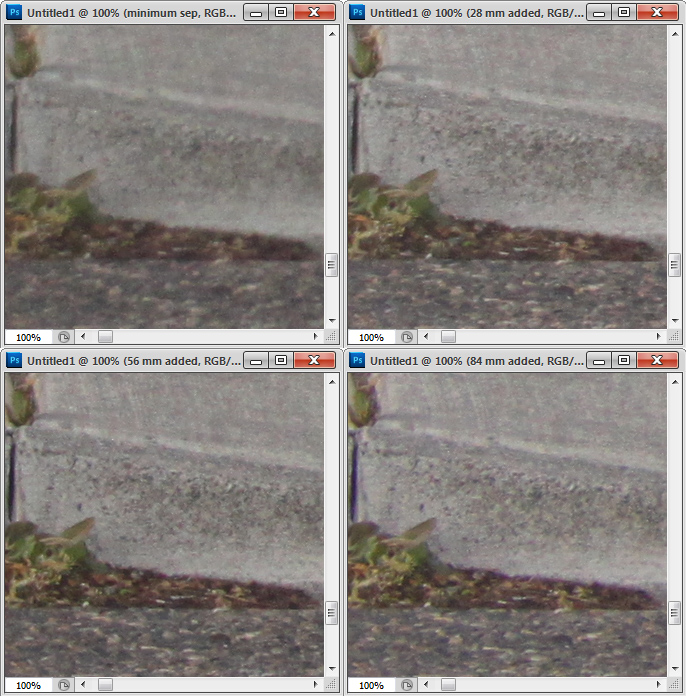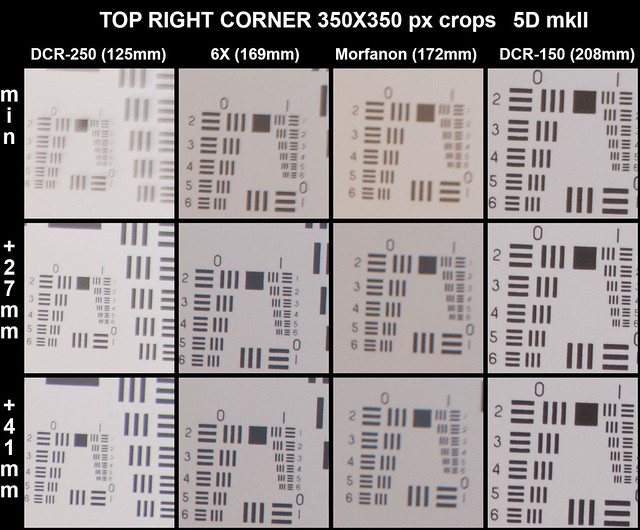Yes, I think more separation could help. I did a quick test just now looking at a distant target through the 11 mm aperture with various separations. On APS-C, corner quality was pretty bad with minimum separation of two adapter rings (49-52 and 52-42, with the aperture bored in a 42mm body cap). It got much better with 28 mm added, improved a little more with 56, then degraded just a hair at 84. Here are actual-pixel crops:seta666 wrote:I am using these "tube lenses" with 20mm separation in case of the DCR's and 30mm separation in case of the X6 lens.
Would you recommend adding extra separation?Normally I use an Iris, would you recomend the Iris to be closer to the tube lens or to the microscope objective?
For example, I feel I am geeting poor corner performance with the DCR-125 and nikon CFI 10/0.25 , could this improve with extra separation?

I would put it as close as possible to the objective. If you put it back at the tube lens, you'll be using off-center parts of the objective away from center of the image. Combine that with added separation and you might even get vignetting.Normally I use an Iris, would you recomend the Iris to be closer to the tube lens or to the microscope objective?
Yes, that seems possible. Aberrations can either add or subtract. They could add with one pairing but cancel with another.Also, is it possible for a tube lens to perform well with some objective and not so well with others?
--Rik


